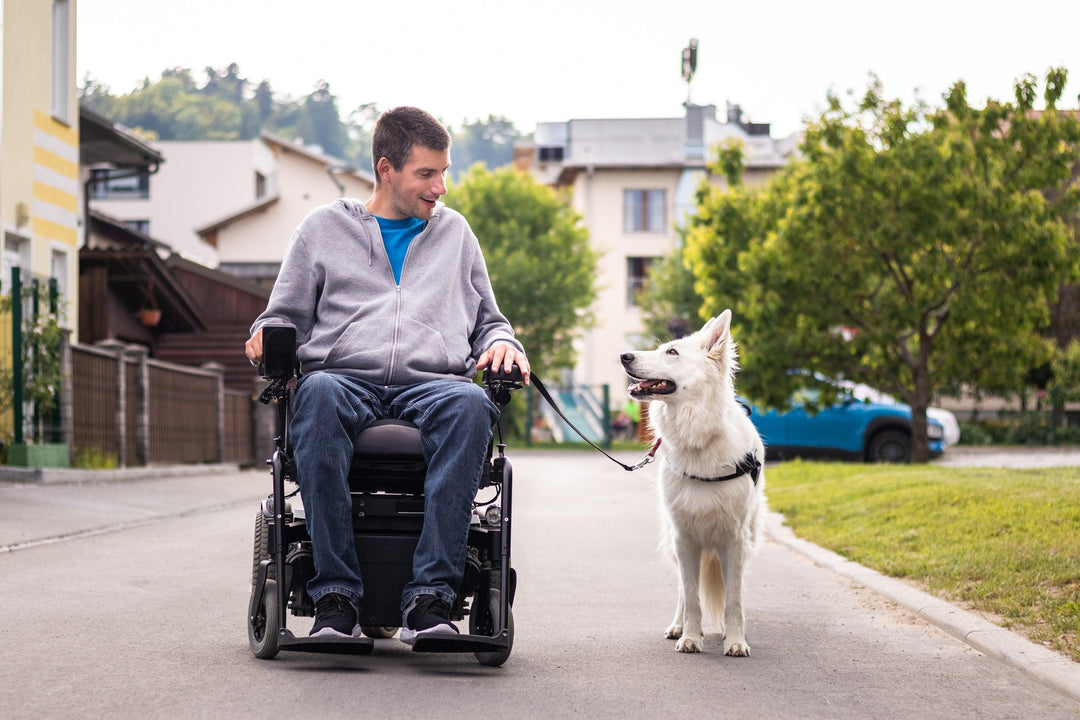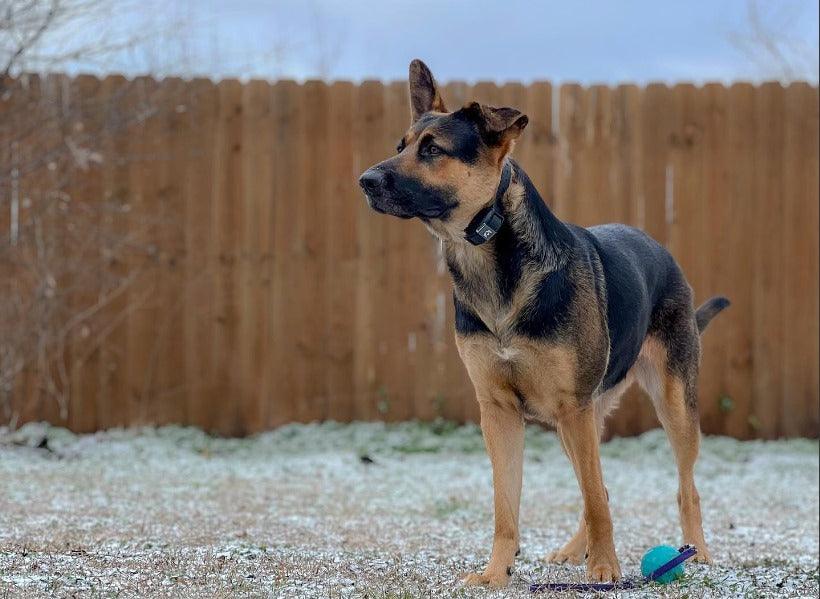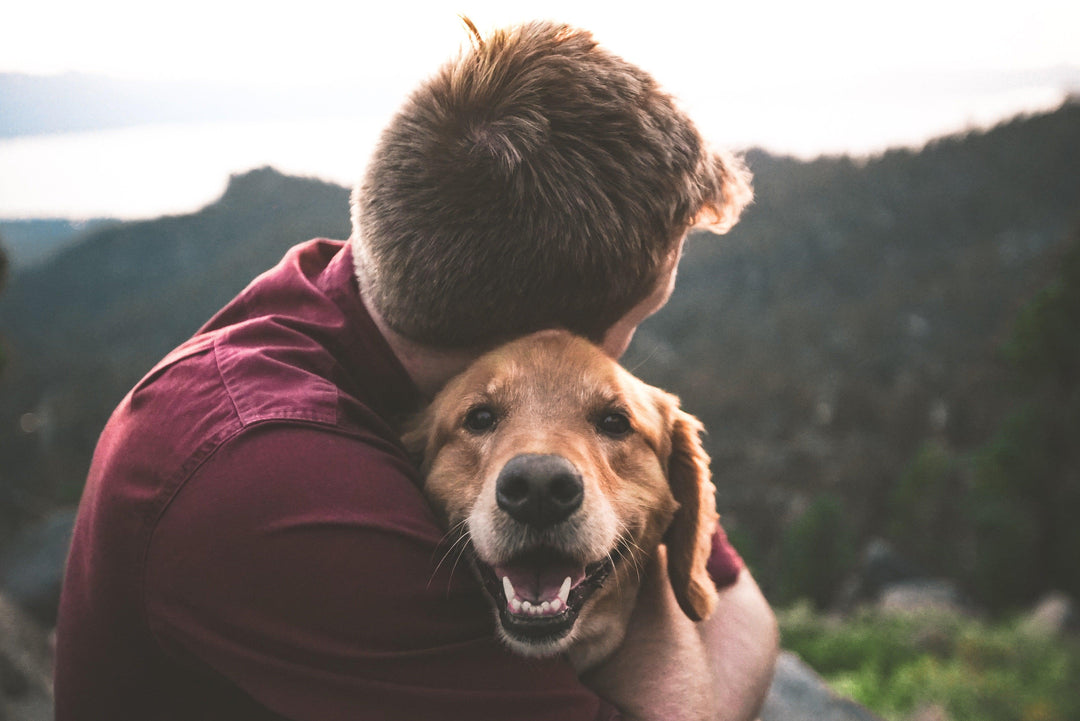THE DOG WHISPERER
An interview with Darin Campbell
Dog trainers serve two purposes: on one hand, they help modify the behavior of dogs while simultaneously teaching pet parents how to continue training at home.
When we asked Darin Campbell what made him become a dog trainer, we learned another purpose that makes dog training beneficial for both the dog and its owner.
“In 2009, my wife was diagnosed with several mental health disorders” Darin says. “It was suggested by her doctor that she get a service dog. Through that process, I decided there needed to be more opportunities and public education around service dogs, and the rest was history”.
Campbell, a professional dog trainer from Oregon, knows one or two tricks when it comes to canine training and believes that before giving the first order, evaluation of your dog makes a key factor to successful training.
“First off, we have to evaluate the totality of the dogs situation. Diet, exercise, living situation. Typically when a dog is acting out it is because the handler is not fulfilling a need the dog has, so we rule that out or fix it before moving to correct the behavior. After assessing the non-dog factors, we then work on communication with the dog. Setting parameters for the dog is key, but consistency is the most important. Typically aggressive dogs are confused about what is expected of them because of poor handler communication. We create boundaries and set expectations that are consistent, so the dog doesn’t need to interpret what we want but knows without a doubt what we are asking.”

“The most rewarding is hearing stories from veterans who had mental health crisis and a dog we trained saved them” – Campbell with his dog, Fergus
Q: Do you think aggressive dogs requires more training time?
When dealing with a dog with aggressive tendencies, this can take some time. When setting the boundaries for the dog we will typically introduce the Invirox dog training collar as an added form of communication. Aggressive dogs need a more dramatic correction at first to get their focus placed on the handler/trainer. I love the Invirox because you can start low with the audible tone and work through the vibrate all the way up to a corrective shock. With so many different levels of communication you can find exactly what works best for your dog. Every dog is different and what works for one may not work for all. So having so many options in this system is great.
Q: Why do you think training is so important, regardless of the size of your dog?
With the jobs our dogs do it is imperative they have basic commands and are always in control. Basic obedience is the foundation a great service dogs training is based on. Now placing therapy dogs with law enforcement our dogs must be able to maintain certain levels of self-control while working with the public. A dog who is well trained to do the work we ask is happy, healthy and gains more rewards in their job.
Q: Which dog training techniques do you consider the most effective, and why?
Operant conditioning is our base training platform. For one it is easy to explain to dog handlers and understanding what and why you do something will help get results. This type of training focuses on reward. Even though much of the time we need to strip a dog down through correction we do this by using reward based techniques. The ultimate goal is to be rewarding the dog and not correcting them because they are doing things right.
Q: Dogs and humans are so different, and even though we want our dogs to be happy, there are some common mistakes that are stressful for dogs. What do you think is the most common mistake dog owners do, when training their pet?
Timing, pet owners miss their opportunity to properly correct a dog by disciplining them when other behaviors have entered the scenario. Dog chews on the shoe then comes and sits next to owner when they walk in the room. Owner disciplines. Now dog thinks they are wrong to sit next to owner when all along it’s the shoe chewing you want to correct. Of course this is an over simplified example but it illustrates my point. Pet owners constantly send mixed messages to their dogs. This creates a confused dog who wants to please but doesn’t know how or what the owner wants so they act out. Inconsistent terminology is another mistake often seen with pet owners. Commands like out, drop it, leave it may all be very similar to humans but when you interchange these commands for you dog they will become confused adding to their frustration. Think of it in terms of traveling to another country not knowing their language and as soon as you figure out what bathroom means they start calling it the water closet. You would be confused as well.
Q: What’s the most rewarding part of your career?
Seeing the immediate impact our dogs make when we donate them to a police departments is very rewarding, but most rewarding is hearing stories from veterans who had mental health crisis and a dog we trained saved them.Darin Campbell is the Director of Working Dogs Oregon, an education and advocacy group dedicated to the advancement of all dogs with Jobs. After training 3 Psychiatric Service Dogs for his wife and helping many veterans train psychiatric service dogs, Campbell and his wife created Working Dogs Oregon, a non-profit organization who works with law enforcement, fire, veterans and individuals with disabilities.
Find @WorkingDogsOregon on social media






Do you have paid training positions?
Leave a comment